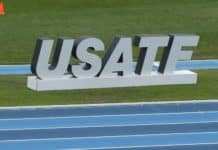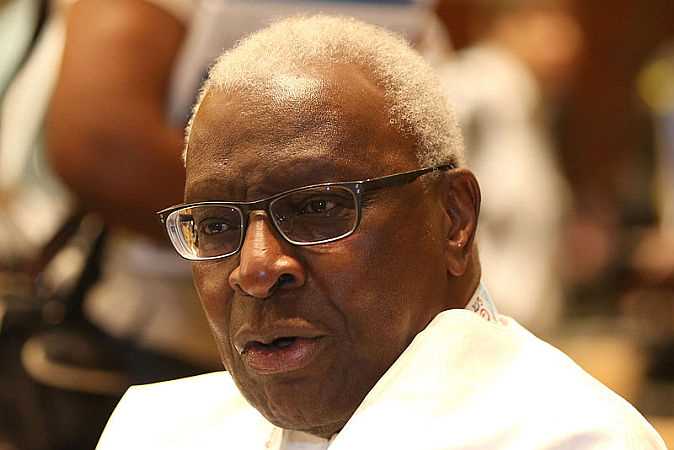After multiple indications last week that the World Anti-Doping Agency would maintain its suspension of the Russian Anti-Doping Agency at this coming Thursday’s meeting in the Seychelles, word leaked out that, in fact, WADA is poised to reinstate it.
What happened?
On Friday (14th), the sub-group within WADA responsible for the Russian situation – the six-member Compliance Review Committee – sent a recommendation to the WADA governing body, the Executive Committee that new developments justified reinstatement. This happened during a Review Committee conference call on Thursday (13th); according to a WADA statement:
∙ “During its usual pre-ExCo conference call, held on 13 September, the CRC reviewed at length a letter from the Russian Ministry of Sport to WADA and was satisfied that this letter sufficiently acknowledged the issues identified in Russia, therefore fulfilling the first of the two outstanding criteria of RUSADA’s Roadmap to Compliance.”
∙ “For the second outstanding criterion, the CRC accepted that the new commitment to provide access to the data and samples in the Moscow laboratory to WADA via an independent expert would be sufficient to justify reinstatement, provided that the ExCo imposes a clear timeline for such access.”
This was met with a firestorm of protest, including the very public resignation of Canada’s highly-respected Beckie Scott, an Olympic gold medalist in Cross Country Skiing in 2002, from the Compliance Review Committee.
American hurdles star Edwin Moses, the chair of the United States Anti-Doping Agency and who attends the WADA Executive Committee meetings, wrote in an Op-Ed essay that appeared in Saturday’s New York Times, that “WADA’s decision is questionably timed, coming just as international athletes on Friday began one of the strongest antidoping campaigns ever, imploring WADA to make the right decision not to readmit Russia. The decision will anger sports fans and clean athletes, whose trust in the global antidoping authority is already wafer thin. They want a strong WADA that backs clean sport, and doesn’t look to appease a handful of sports politicians.”
Moses noted that “Having spoken to athletes, I know they overwhelmingly support the right decision being made in the Seychelles — they overwhelmingly support WADA’s sticking to its road map. This was not the time, they say, for the global antidoping body to perform the U-turn of all U-turns.”
WADA itself felt enough heat that it published another statement on Saturday that included this justification: “The fact is that leadership requires flexibility. The proposals made in the leaked letter are grounded in pragmatism and are nuanced interpretations of the Roadmap in order to bring matters to a conclusion and to not allow the significant progress that the Russian Anti-Doping Agency (RUSADA) has made over the last two years, under WADA’s supervision, to be undone.”
The WADA statement was accompanied by six attachments of letters between the Russian sports ministry and the WADA compliance committee and the WADA leadership, specifically chair Craig Reedie (GBR) and Director General Oliver Niggli (SUI).
The key letter is from Reedie and Niggli to Russian Minister of Sport Pavel Kolobkov on 22 June:
∙ Reedie and Niggli proposed that a written confirmation of Russia’s acceptance of the International Olympic Committee’s Schmid Commission Report from December 2017, which concluded that the Ministry of Sport and its subordinates had involvement in the doping scheme, would suffice in place of acceptance of the McLaren Reports, which went into much greater detail.
∙ The two further proposed that instead of unlimited access to the records of the Moscow Laboratory and the samples stored there, copies of the raw data provided to a mutually-agreed, “independent expert” would suffice and then re-analysis of only those samples which are identified from the raw data as having been doping positives. The letter states, “This number is likely to be very limited and once again can be done jointly with the Investigative Committee.”
On 13 August, Kolobkov wrote back, including this passage:
“We have accepted and executed the decision of the IOC, based on the findings of the the Schmid Commission, and at the same time we believe that the processes of identifying and punishing the perpetrators must be carried out in accordance with the adopted procedures. The Investigative Committee of the Russian Federation continues the investigation. Information about possible persons whose guilt will be established accordingly will be transferred to the courts and these persons will be punished. We assure you that we will do our best to continue the work of identification and punishing the perpetrators.”
On this basis, Reedie, Niggli and Kolobkov agreed that the acknowledgment of a government-led doping scheme has been met, although cynical observers would suggest that the Investigative Committee will simply blame the whistle-blowers – Dr. Grigory Rodchenkov and Vitaliy Stepanov of the Moscow Lab – and ask for their extradition to Russia!
In a follow-up letter of 13 September, Kolobkov accepted the second proposal for providing the lab data to a mutually-agreed independent expert and “If based on the LIMS data and the raw data, potential Adverse Analytical Findings are identified in respect of samples stored in the laboratory sealed by the Investigative Committee we will work in a spirit of cooperation with the Russian Criminal Procedural Code to enable the independent re-testing of these samples in accordance with the International Standard for Laboratories.”
The letter concluded with, “As you can see, we have accepted your offer of June 22, 2018. I hope that WADA will perform its undertaking and re-instate the compliance of RUSADA at the next meeting of the WADA Executive Committee of September 20, 2018.”
It’s worth noting that in a letter to the WADA Executive Committee back on 19 June of this year, the Compliance Review Committee chair Jonathan Taylor (GBR) wrote that:
“Gunter Younger, Director of WADA’s Intelligence & Investigations Department, told the CRC that the copy that WADA has of the Moscow laboratory’s LIMS database includes 9,453 suspicious findings that were not reported in ADAMS, some of which relate to the 2,876 samples still stored at the Moscow laboratory.”
So the number of samples and potential positives is hardly the modest number suggested by Reedie and Niggli’s 22 June letter.
So what happens now?
The decision whether to reinstate Russia’s Anti-Doping Agency (RUSADA) is up to the WADA Executive Committee meeting on Thursday, not Reedie and Niggli. The Compliance Review Committee has made its recommendation, but the Executive Committee does not have to accept it.
There is no doubt that the International Olympic Committee and others aligned with IOC President Thomas Bach would like to see Russia reinstated. But they are not the only ones involved:
∙ The International Association of Athletics Federations (IAAF) has continued its suspension of the Russian Athletics Federation pending the same two conditions as WADA, but wants its own access to the Moscow lab data and samples as regards track & field athletes. It would likely follow WADA’s lead.
∙ The International Biathlon Union has some modest political penalties in place against Russia, but not Russian athletes. But there is also an ongoing Austrian and Norwegian police inquiry into whether the former IBU President and Sectreary General – Anders Besseberg (NOR) and Nicole Resch (GER) – covered up Russian doping positives in return for bribes.
∙ French authorities are still working on their case against former IAAF President Lamine Diack (SEN) on charges that he took bribes to cover up Russian doping positives in road running and track & field events.
The WADA Executive Committee has multiple possible avenues it can take on Thursday:
(1) It can accept the bargain proposed by Reedie and Niggli and reinstate Russia, which will then lead to further in-fighting inside the anti-doping movement. Already, Linda Helleland, the Norwegian Minister for Children and Equality, wants to run to replace Reedie as the WADA President in late 2019 and has promised a thorough review of the Russian issue if elected.
(2) WADA can table the recommendation and ask for further clarity on the lab data transfer and access to samples.
(3) The Executive Committee can reject some or all of the recommendations of the Review Committee and maintain Russia’s suspension. It doesn’t have to be all vinegar, however. The Executive Committee could agree to accept the Russian agreement to the Schmid Commission report as satisfactory to acknowledge Russian governmental involvement in the doping scandal.
(4) If it wanted to split hairs, the WADA Executive Committee could also decide to “provisionally reinstate” Russia but only when (1) access to the lab records, (2) access to the stored samples and (3) re-testing of all samples requested by WADA and under supervision to WADA’s satisfaction, is completed.
That would maintain the suspension in place for some time and give the Russians a direct incentive to provide the lab data and access to the samples sooner than later.
This is the flip side of what the Review Committee recommended – reinstate now and re-suspend if the data and samples aren’t provided quickly – but changes the burden of action completely … to the Russians.
There is a great desire, in many quarters, to be sure that not only is Russia punished for its transgressions against the Olympic Movement, but against those athletes who had to compete against doped-up competitors, but that this does not happen again. Getting to the bottom of the doping records held in Russia is part of that and reinstating Russia now does not motivate Moscow’s “Investigative Committee” to cooperate quickly or fully.
The WADA Executive Committee includes 12 members, including Reedie and Helleland, and five observers (including Moses and Scott). The discussion is not likely to be short and could be quite lively.
But the question of how strongly WADA is willing to push Russia will be a signal of how much trust all sides have in WADA’s integrity. It would do well to be as precise as possible in its decision, and in disclosing the discussion, the options and in the end, who voted for what.
Rich Perelman
Editor























